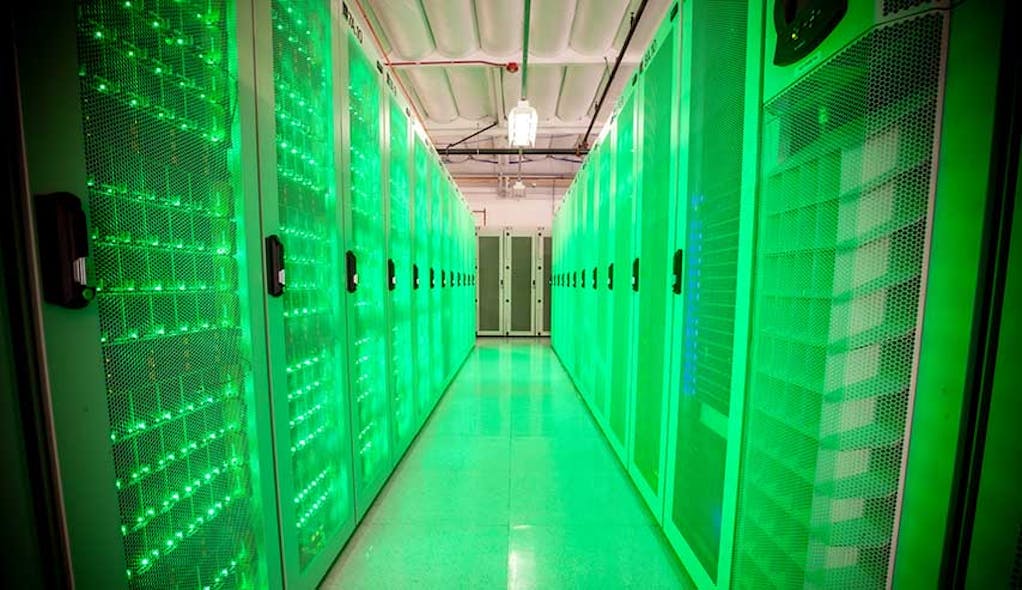Colovore Building New Data Center for Extreme Density AI Workloads
As a specialist in high-density hosting, Colovore has served customers running the most power-intensive data center applications, especially AI workloads running on NVIDIA GPUs. As more companies adopt AI, power densities are rising beyond what many traditional data centers can support.
“In the last 3 years, it’s really become more of a tidal wave of power density, driven fundamentally by incredible innovations at the chip and processing layers,” said Ben Coughlin, co-founder and Chief Financial Officer of Colovore. “It is really driving densities through the roof.”
“The AI revolution is here and simply put, these servers demand purpose-built, liquid-cooled, high-density colocation environments,” said Sean Holzknecht, President and Co-Founder of Colovore.
New Capacity in a Supply-Constrained Market
Colovore operates in the heart of Santa Clara’s data center district. Its original data center is on Space Park Drive, next to a Digital Realty campus that includes the region’s primary connectivity hub. Neighbors include Equinix and Cyxtera.
The new facility will be next door at 3060 Raymond Street, enabling Colovore to create a single campus. Colovore will retrofit an existing warehouse at the site and expects to bring the facility online in early 2024.
“When we opened our doors in 2013, touting 20 kW per cabinet in our Phase 1, many thought ‘power density’ wasn’t a big issue at the time,” said Holzknecht. “We now support thousands of AI and GPU systems for Fortune 500 companies down to Silicon Valley startups, in hundreds of cabinets each drawing 15 – 50 kW per cab. The bottom line is that this data, and all these incredible AI and Big Data platforms, are really thirsty.”
The Colovore project will bring new capacity into a supply-constrained Santa Clara market. Data center broker CBRE says data center capacity in Silicon Valley is at the lowest supply in its history, with vacancy rates an extraordinary 1.3%.
Santa Clara has long been the Data Center Capital of Silicon Valley due to competitive power pricing from the municipal utility, Silicon Valley Power. It’s the favored spot to deploy new hardware and services from the Valley’s marquee technology companies, as well as a legion of fast-moving startups. But Santa Clara has almost no open land parcels available, meaning developers must acquire sites with existing structures and knock them down to make way for a purpose-built data center.
By retrofitting an existing facility, Colovore expects to have a shorter path to market than new projects involving demolition and multi-story projects. The project has already received approval for power delivery from Silicon Valley Power and will include seismic reinforcement and other upgrades in its retrofit.
The building is about 30,000 square feet, but Colovore’s design allows it to maximize its real estate by putting more compute capacity into every square foot.
Hot New AI Hardware Drives Densities Higher
As recently as 2020, rack power densities in enterprise data centers averaged 5 to 9 kW, with hyperscale operators at about 8 to 10 kW. Those numbers have begun trending higher as more companies make AI a part of their strategy, making products and services smarter.
Coughlin says the densities will continue to rise as new, more powerful chips enter the market. The latest hardware from NVIDIA and Cerebras averaging more than 1 kW per rack unit. Flash storage has also become more power-intensive, adding to the density challenge.
“In Silicon Valley, we have a seat in the front row in a market that’s advanced,” said Coughlin. “We’re seeing this becoming more mainstream,” said Coughlin. “The technology has delivered, the hardware is getting cheaper, and the applications are getting easier to use. Companies are now making investments in AI.”
Colovore’s design allows it to adapt. It employs a raised floor with pipes underneath, with a water loop running to a heat exchanger outside the building. The chilled-water rear cooling door is its standard design, but Colovore is already running several megawatts of customer workloads using direct liquid cooling. There are a number of approaches to DLC, and the company says it can support them all.
“Server manufacturers are considering a lot of different ways to do it,” said Coughlin. “One of our advantages is that we have the piping below the floor already.
“Our assumption is that this growth (of high-density workloads) is going to continue, and we are well-positioned to deliver.”
Colovore is one of a small number of high-density specialists, along with ScaleMatrix, which is based in San Diego and supports that region’s active ecosystem of genomics research firms. CirraScale offers cloud services for extreme-density apps, and has a presence in both the ScaleMatrix and Colovore facilities.



